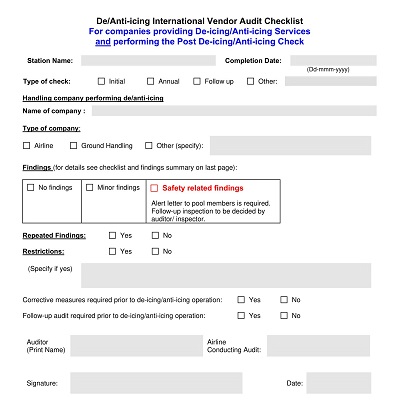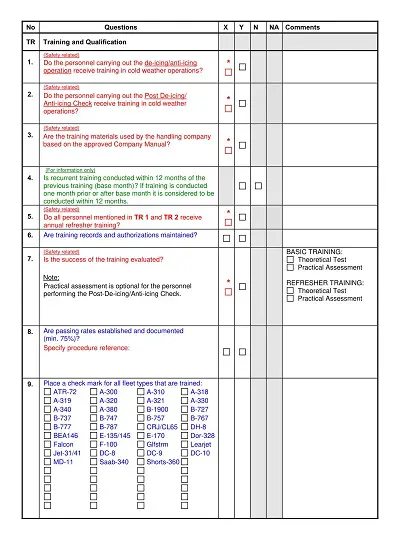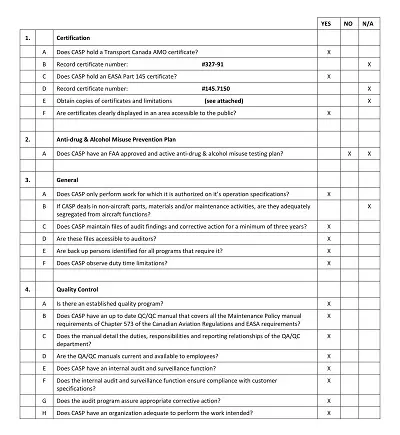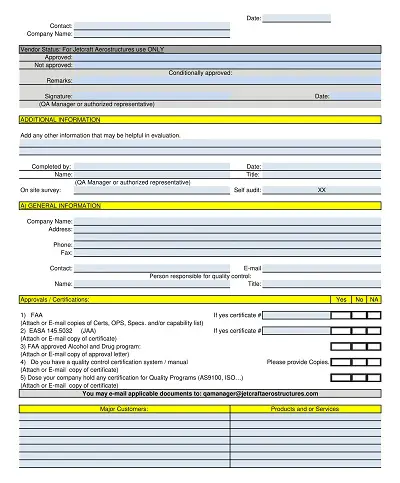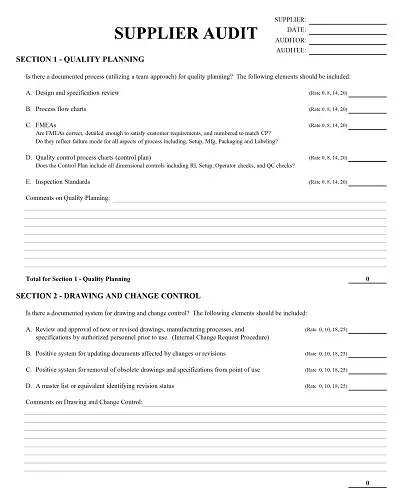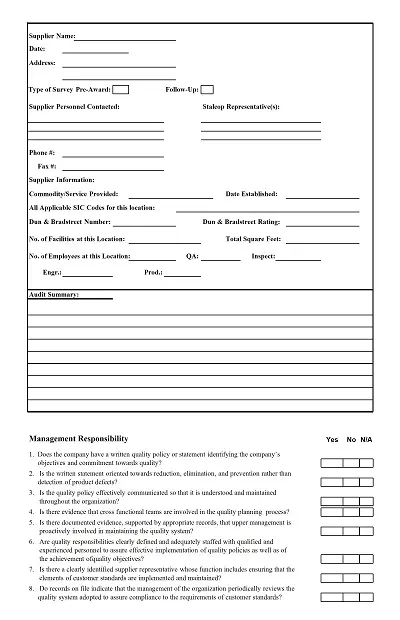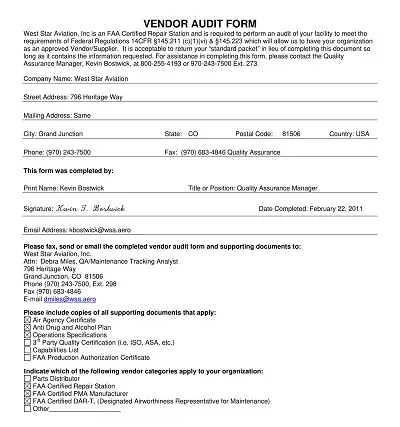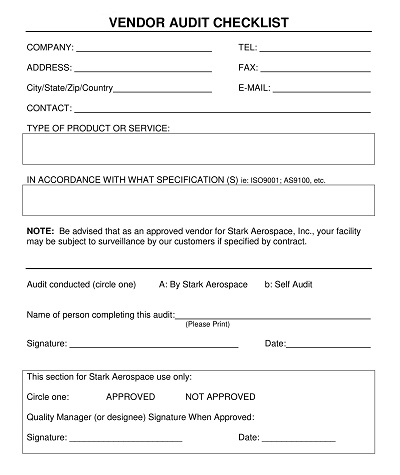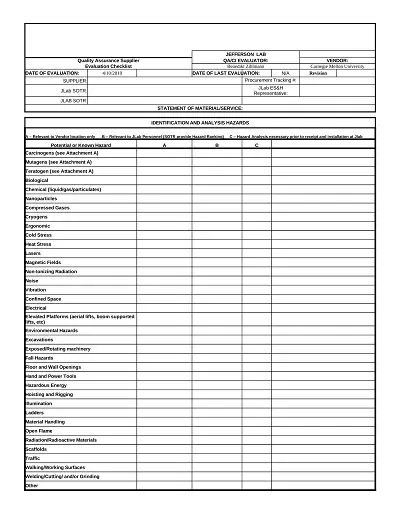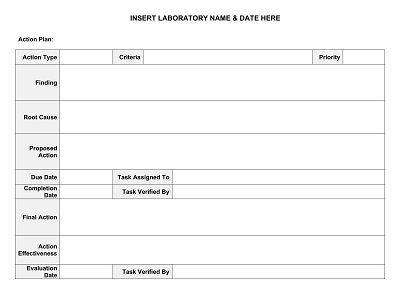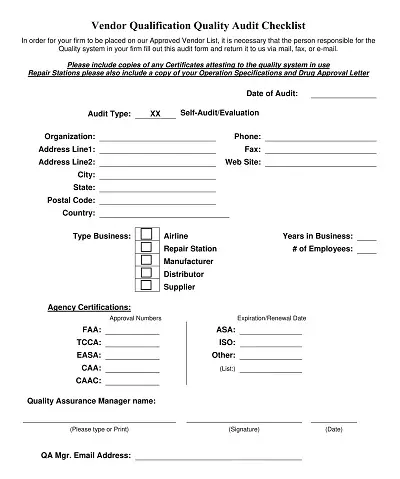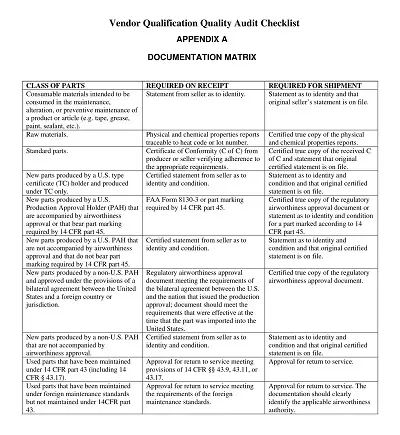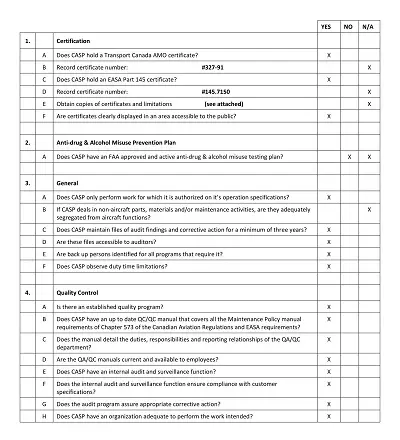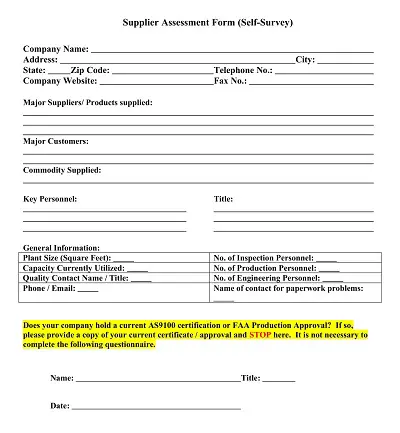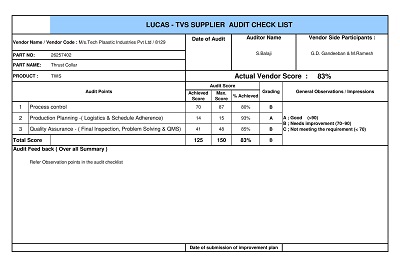25+ Free Vendor Audit Checklist Templates – PDF, Excel
A vendor audit checklist template is a tool used to help companies ensure that their suppliers and vendors are meeting certain predetermined standards. Businesses need to establish a thorough vendor management process to prevent any potential risks and ensure that the products or services delivered meet their quality standards.
Table of Contents
The checklist is customizable, so it includes important criteria and requirements that are specific to your organization’s needs. By utilizing this tool, you can effectively evaluate your vendors and identify potential areas for improvement. Ultimately, the vendor audit checklist template serves as a valuable tool for maintaining consistency and compliance in your business operations.
Download Free Vendor Audit Checklist Templates
Importance of Vendor Audit Checklists
When it comes to running a business, ensuring that your vendors are meeting the requirements is crucial. This is where vendor audit checklists come into play. An audit checklist provides a comprehensive list of items to assess and review when evaluating vendors.
It ensures that the vendors you work with are meeting the necessary standards and regulations that are important for the success of your business. Without these checklists, it can be difficult to keep track of vendor compliance and ultimately put your business at risk. By regularly conducting vendor audits with the help of checklists, you can maintain the highest level of quality control and protect your business’s reputation.
Key Components of a Vendor Audit Checklist
When it comes to managing third-party suppliers, vendor audits are a crucial tool for ensuring that everything is running smoothly. However, putting together an effective audit checklist can be a daunting task, particularly if you’re new to the process. To make sure you don’t miss any important steps, there are a few key components that should be included on your vendor audit checklist.
These might include areas like data security and privacy, financial stability, contract compliance, and product or service quality. By taking the time to carefully assess each of these areas, you’ll be able to identify any potential risks or issues before they become major problems. After all, when it comes to vendor audits, it’s always better to be prepared than sorry.
Benefits of Vendor Audit Checklists
Vendor audit checklists are a critical tool for ensuring that vendors meet certain standards and comply with regulations. One of the key benefits of these checklists is that they provide a standardized approach to evaluating vendors, which can save time and increase efficiency.
Additionally, a well-designed vendor audit checklist can help identify potential risks and areas for improvement, allowing businesses to take proactive measures to address these issues. By using vendor audit checklists, companies can ensure that they are working with safe and reliable vendors, which can protect their reputation and reduce the risk of costly legal or financial penalties. Ultimately, the benefits of vendor audit checklists go far beyond simple compliance, making them an essential tool for any business looking to optimize its vendor management processes.
How to Create a Vendor Audit Checklist Template
The success of any business is highly dependent on the quality of the vendors it works with. This is why every business needs to conduct periodic vendor audits to ensure that its vendors are meeting the necessary compliance standards. While vendor audits can be a daunting task, creating a vendor audit checklist template can make the process much easier and more effective.
Define the Scope of the Checklist
The first step in creating a vendor audit checklist template is to define the scope of the checklist. This will help you identify what areas of the vendor’s operations you want to evaluate. The scope could be based on the vendor’s products, services, or processes. Once you have determined the scope, you can begin creating a checklist to ensure that all areas are covered.
Identify the Audit Criteria
After defining the scope, the next step is to identify the audit criteria for the vendor checklist template. This involves outlining the specific requirements and standards for each area of the vendor’s operations that you want to evaluate. For instance, if the vendor provides a particular service, you need to identify the specific requirements that the vendor must meet to ensure that they are providing high-quality services.
Customize the Checklist
Customizing the vendor audit checklist is critical as it enables you to tailor it to suit your business’s specific needs. Review the audit criteria and determine if any items should be added or removed. Ensure that the document is easy to read and understand, and the checklist items are in logical order.
Assign Weights and Scoring Criteria
After customizing the checklist, it is essential to determine weights and scoring criteria for each checklist item. Assigning weightage to each item will help you prioritize the most critical items to be evaluated. Moreover, the scoring criteria will help you rate the vendor’s performance in each area of operation. Ensure that the weights and scoring criteria are consistent across all areas of the vendor’s operation to maintain uniformity.
Follow Up and Measurement
No vendor audit checklist template is complete without follow-up or measurement. Establish the frequency and method of follow-up with your vendors to ensure that they are implementing the necessary corrective actions. Additionally, you should identify the key performance indicators (KPIs) to measure the vendor’s performance. Use these KPIs to track their performance, present the data, and make recommendations for improvement.

